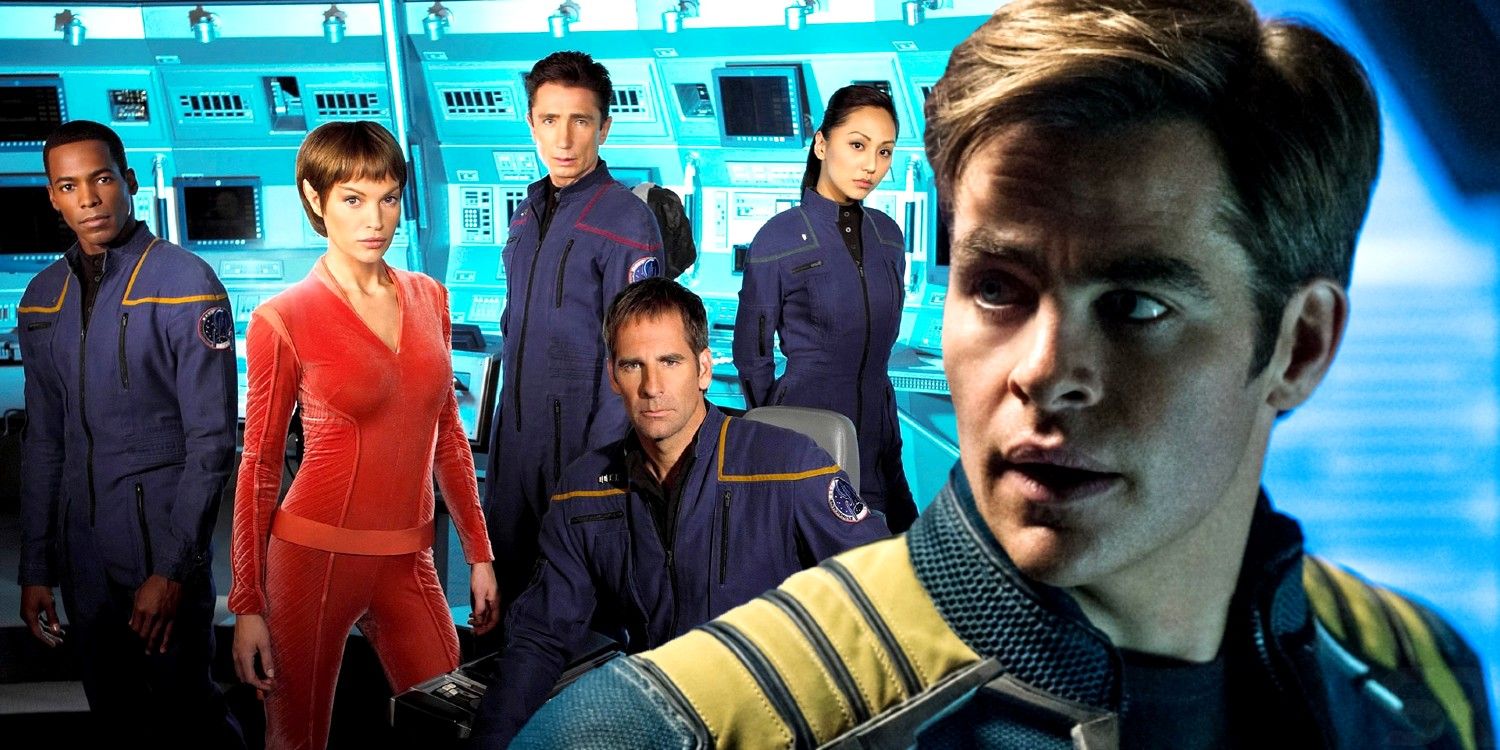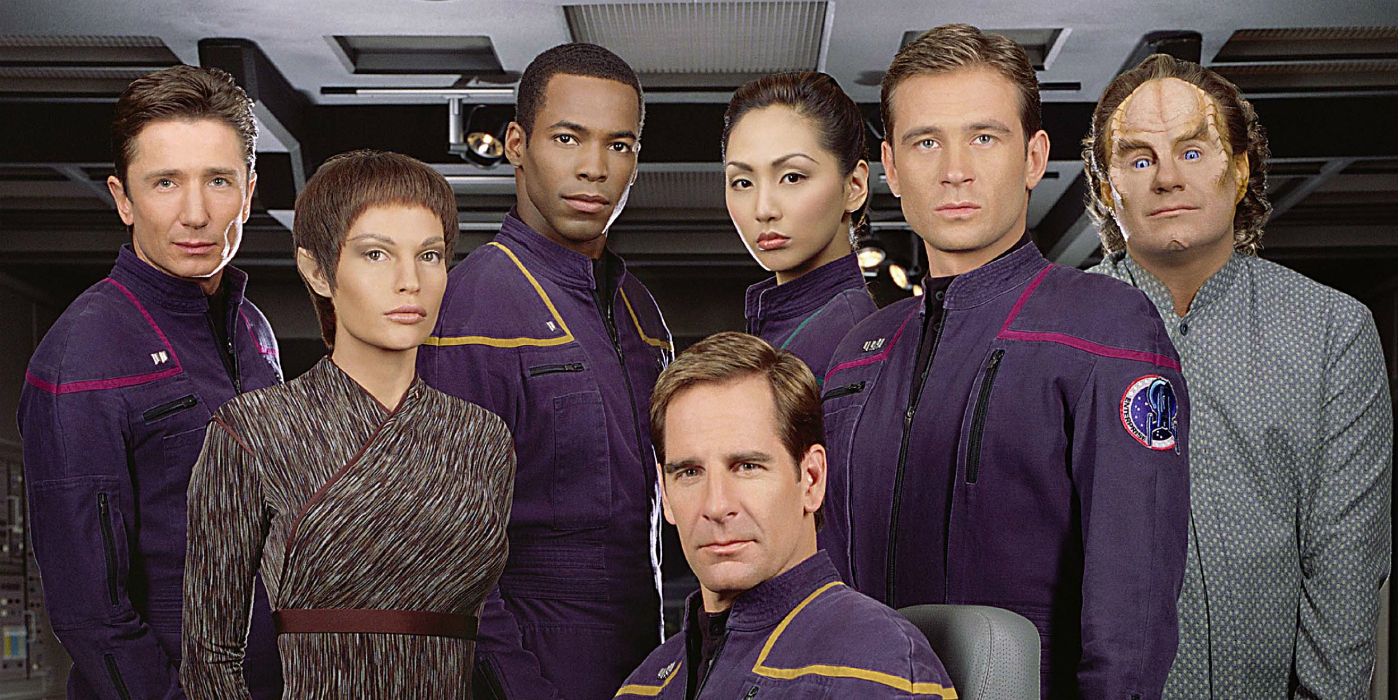Star Trek: Enterprise remains canon in both of the Star Trek franchise's main timelines because of the year when one of those timelines was created. Enterprise was the fifth series in the franchise, lasting for four seasons between 2001 and 2005. The show served as a Star Trek prequel, set roughly a hundred years before the events of Star Trek: The Original Series, and chronicled the adventures of the very first captain and crew of a Starship Enterprise, the NX-01.
Prior to 2009, almost all of Star Trek existed on one major timeline barring episodes set in the Mirror Universe. As a result, the franchise rarely dealt with long-term stories involving branching timelines, instead preferring to keep most of its storytelling in the Prime Timeline and resolve time travel stories quickly so that they did not create permanent alternate realities. The rebooted film series that began with Star Trek (2009), however, threw this convention out the window and created the Kelvin Timeline, an alternate reality that split off from the Prime Timeline in the year 2233. The Kelvin Timeline was created by the film's villain Nero, when his Romulan mining ship traveled from the year 2387 back to 2233, through a black hole created by TOS's Ambassador Spock in an attempt to stop the Romulan Supernova.
Upon arriving in 2233, Nero destroyed the USS Kelvin, killing James T. Kirk's father George Kirk, and creating a new timeline in the process. Since its creation, the Kelvin Timeline has become the second major timeline in the Star Trek franchise, supposedly running parallel to the Prime Timeline but focusing on the altered events that its creation made possible, mainly involving Captain Kirk and the crew of the USS Enterprise. Of course, Kirk and crew's story in the rebooted films is very different from what it was in TOS, but one part of Star Trek canon that exists exactly the same in both timelines is Star Trek: Enterprise. Enterprise was set from the years 2151 to 2155, beginning 82 years before the split of the timelines in 2233. Nero's temporal incursion did not change anything about what had come before it, meaning that Star Trek history prior to 2233, including everything that happened in Enterprise, is canon in both timelines.
Since Enterprise covered a lot of important early Star Trek history, including the founding of the Federation, the fact that its events are the same in the Kelvin Timeline served as a good baseline for the reboot films, allowing classic Trek fans a familiar set of background information in a universe where almost everything else was different. The films were clearly aware of this fact as well and made an effort to include references to Enterprise as Easter eggs for the fans. Star Trek (2009) included a reference to "Admiral Archer" which the writers later confirmed meant Jonathan Archer, the Captain of the NX-01 and the main character of Enterprise. Along with this, there was a brief glimpse of a model of the NX-01 in Star Trek: Into Darkness, and a scene in Star Trek: Beyond that included the main characters watching footage from the early 22nd century showed officers wearing the Enterprise-era uniform style.
While Enterprise was not statistically the most popular Star Trek series in history, the show continues to have a small but devoted fanbase among fans. Along with this, the fact that it depicted so many important early events on the timeline made it an important addition to the Star Trek franchise's history. For both of these reasons, the rebooted films were smart to make sure that the events of Star Trek: Enterprise still happened the same way in the Kelvin Timeline.


